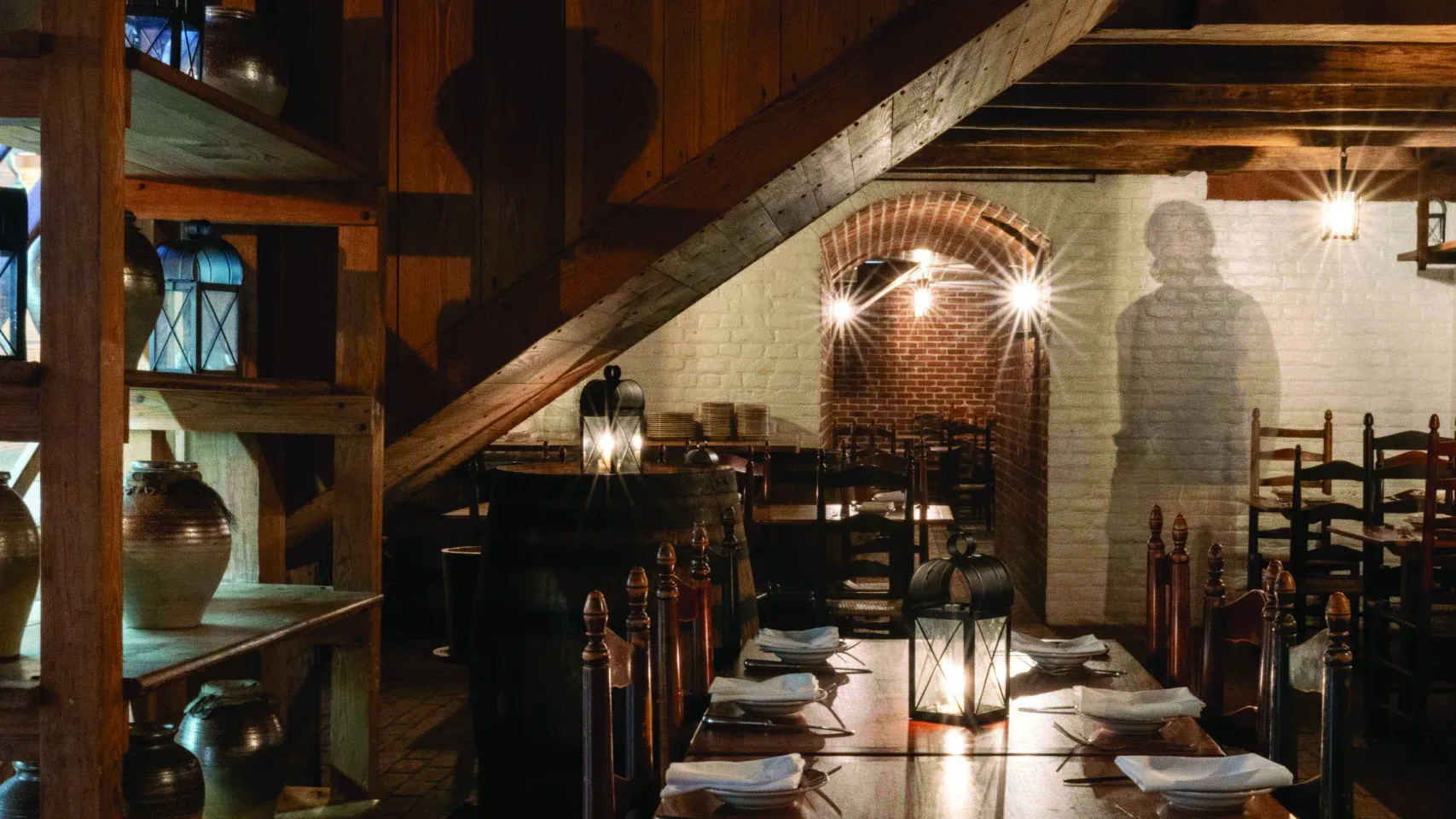Every holiday, “Buy the ham” gets scribbled on a Post-It note and stuck to my laptop. I’m known as the worst cook in my family, so the least I can do to contribute to our holiday feast is grab a ham.
Hams are forgiving entrées for the culinarily challenged, thanks in large part to the months of lavish attention they receive before we ever get our hands on them. Especially Virginia hams, whose signature nutty-sweet flavor traces back centuries to razorbacks foraging on peaches and peanuts that littered after-harvest forest floors. That diet was formalized into law in 1926. Although the diet restrictions were dropped in 1966, certain artisanal smokehouses have stuck with it.
“Virginia hams—especially the classic Virginia country ham—stand out because of a mix of history, production method, aging, and flavor,” says owner of Norfolk’s Old Virginia Ham Shop, Dana Bright-Sampson. It’s an umami-blast that’s wooed ham-lovers since Jamestown, when colonists combined Chesapeake smoking and drying techniques with English salt-rubs.
Those early humid, mild winters of coastal Virginia gave hams a chance to age up to 18 months without freezing, which is one reason why, still today, Virginia hams are not brined (a speedier process) like other hams. Using what Bright-Sampson calls a “salt, smoke, and time” method develops a flavor that had even Queen Victoria picking Virginia ham over European cured hams.
Virginia hams are best enjoyed sliced “paper-thin to balance saltiness,” says Bright-Sampson. And if your ham comes with a hunk of—gasp—mold, don’t panic. “That’s a completely natural part of the traditional curing process—just like on fine cheeses. It’s harmless and washes right off,” she explains. OldVirginiaHamShop.com
Old Virginia Ham Shop’s How-To for Holiday Ham Prep
Courtesy of Dana Bright-Sampson, Old Virginia Ham Shop, Norfolk
Start by rinsing your ham, then soak it in cold water for 12–24 hours (you’ll want to change your water a few times).
To simmer your ham, cover with fresh water, then simmer (not boil) for 20–25 minutes per pound until your ham is 160°F. Cool in liquid.
If you’d rather bake your ham, wrap in foil or cover in a roasting pan with an inch or so of water. Bake at 325°F for 20–25 minutes per pound until your ham is 160°F.
To finish, peel off your ham’s skin. Score its outer layer (that’s slicing long, shallow surface cuts across your ham) and brush on glaze if desired. Then, bake an additional 15–20 minutes at 400°F.
Serve sliced thin with biscuits or sides.
This article originally appeared in the December 2025 issue.











